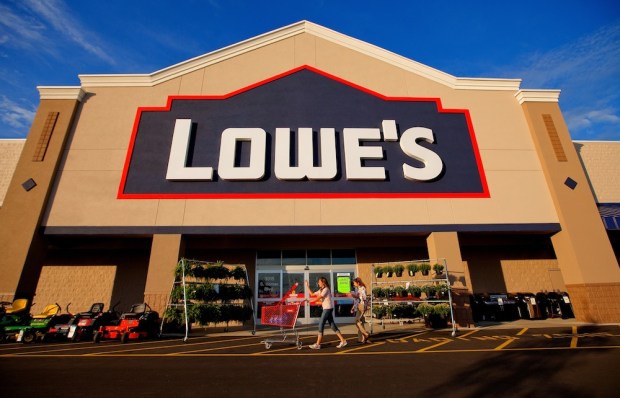Why Lowe’s Is About The Project, Not The Purchase

In an increasingly competitive retail landscape, Lowe’s finds itself with a tricky circle to square: delivering an intimate customer experience in a big-box store. Lowe’s is not the only player in the retail game feeling this particular pressure. The big-box stores that were the future of retail 15 years ago are finding themselves increasingly competing to get with the times when it comes to the rapidly expanding digital commerce frontier.
And in some sense, one might assume Lowe’s has it somewhat better than the other big boxes out there. Clothes can be bought relatively easily on Amazon — ditto for stereo equipment, toys and TVs. Small consumer goods on the whole are fairly easy to box up and ship. Large appliances, on the other hand, are difficult to ship. Paint is one of those things consumers tend to want to see in person, and anything that needs lots of configuration or installation assistance is less than perfectly tailored for eCommerce.
But Amazon is unsubtle in its ambition to become America’s destination for shopping for just about everything, which means even Lowe’s is thinking about how to get with the digital program, while still providing for what it will always be able to do just a bit better than any online-only competitor.
“We are providing solutions to consumers (and our pro business) to help customers along their home improvement journeys,” explained Stephen Carvelli, VP of digital technology for Lowe’s. “Customers manage their own journeys how they feel comfortable.”
The Project Not The Purchase
Lowe’s, of course, is far from the only retailer working on delivering a great customer experience, but Lowe’s does have something of an unusual relationship with its customers, who, more than other types of shoppers, are in for the long haul. Given what Lowe’s is — a DIY mecca of sorts — customers interact with the business across a spectrum of locations, according to Carvelli. Customer journeys start online with research, move into the stores for buying, sometimes back to the customers’ homes for installations to customer service support lines.
Customers have multiple touchpoints, and retailers like Lowe’s that tend to supply them through multi-step complex projects need to create a single retailer experience that the customer can follow on a single through-line.
“Lowe’s customers are looking for a guided selling experience,” Carvelli said. “Supporting home improvement projects is not a ‘single item’ issue. If you buy a single item, you’re probably working on a project. We understand your purchase history. We’re there with you along that journey.”
Building The Right Infrastructure
The multiple touchpoints of omnichannel are both a benefit for retailers and a possible bug, since every place to meet and greet is, by extension, also a chance to crash and burn. To keep those flame-outs from flaring up, Lowe’s works to hardwire employees into the digital landscape, requiring all employees to carry iPhones or other Apple devices so they can search in real time their home store’s inventory or that of other stores.
In addition, they can assemble orders, arrange for delivery and even bring up estimation calculators when the customer wants to know how much paint or flooring to buy, for example.
Lowe’s also makes extensive use of real user monitoring (RUM), which ensures that how customers and associates actually experience the performance of Lowe’s various digital channels is up to snuff.
“For DIY customers, there’s an expectation that the digital experience will be quick and responsive,” Carvelli explained. “There’s a correlation between performance and abandonment.”
Lowe’s also requires digital performance management for every new project undertaken, with a particular focus on leveraging automation and open-source software. Moreover, Carvelli noted, Lowe’s commitment to a digital future driven by data is more than a technological change, or even an operational one. The changing focus in the retail marketplace has also pushed Lowe’s to adopt a new corporate culture.
“Lowe’s has made performance part of their culture and has effectively leveraged SOASTA’s DPM platform to deliver great customer experiences, business outcomes and IT performance across multiple devices,” said Tom Lounibos, CEO and cofounder of SOASTA — the technology vendor that makes Lowe’s real user monitoring possible.
The trick for a very ingrained physical player like Lowe’s in an increasingly digitally oriented world is to not focus on either/or options and, instead, focus on the whole.
“Every part of the process must be quick and efficient,” Carvelli explained. “We take a big box and turn it into an intimate experience.”
It’s as we noted at the outset — not an easy challenge to meet. But if Lowe’s is going to successfully ride the retail reinvention wave, it is the the circle that will have to be squared.
